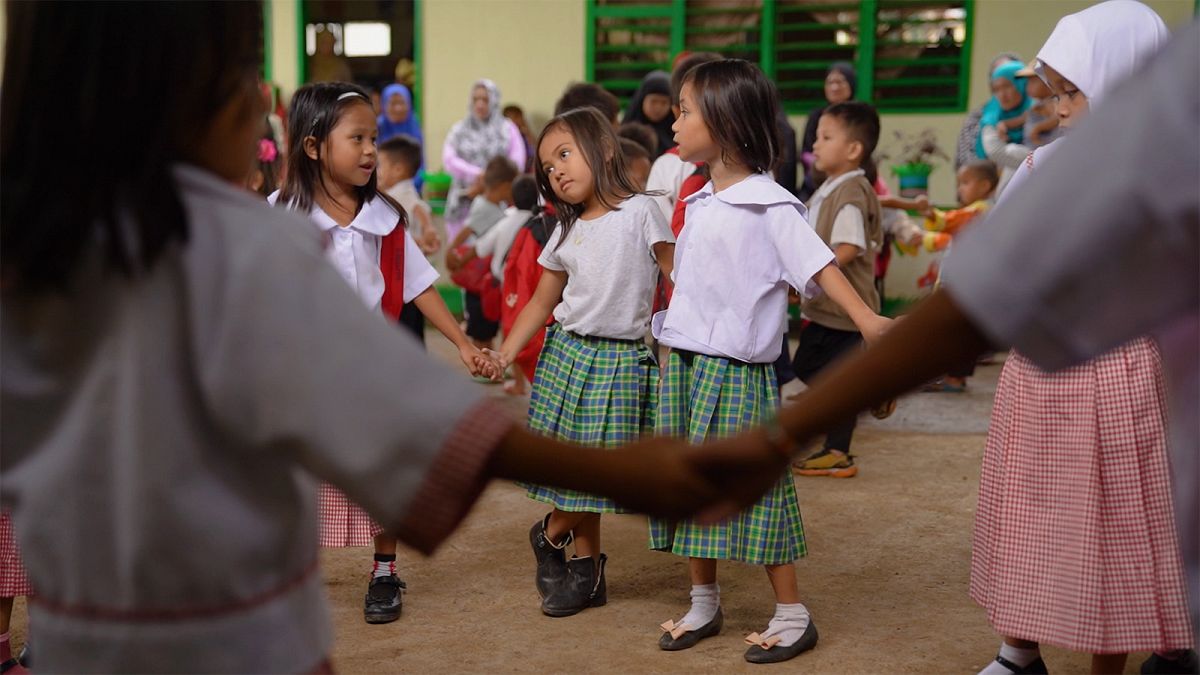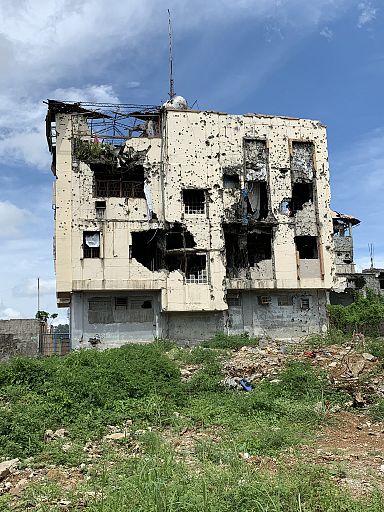Two years after Marawi's siege, 66,000 Filipinos still live in tents or shelters and only a small amount of displaced children have resumed school regularly. Improving access to education is among the aims of a project, funded by EU Humanitarian Aid, which has been a gamechanger for many families.
In May 2017 the Government of the Philippines launched an offensive against ISIS-affiliated groups that had taken over the city of Marawi.
The battle lasted for five months and ended with over one thousand killed and 370,000 people displaced according to the United Nations.
Today over 80% of the displaced have returned but 66,000 are still living in shelters, tents and host locations.
Marawi’s old neighbourhood is still a ghost town and the whole of Mindanao remains under martial law due to clashes still raging in various parts of the island.
ISIS-affiliated groups have been weakened, but are still active. Their threat lingers on, not only as old graffiti on the abandoned houses of Marawi’s “ground zero.”
Besieged schools
Among charred mosques and private buildings pockmarked by bullets and shrapnel, almost one-third of Marawi’s seventy schools have been damaged or flattened down.
During the Marawi siege, 24,000 pupils were displaced and only a small part has resumed regular classes.
For 80% of the displaced pupils, schooling happens at home.
"During the siege, the bullets were flying inside the house, we used to lie on the floor as they were landing all over the place. I was afraid as I didn’t know how we were going to escape from all that," says pupil Pao Pao.
The 13-year-old lived in ground zero, and now she is part of the 20% of displaced children who are attending regular classes, allowing her to overcome the trauma of war.
Almost 550 internally displaced students have been accepted at Angoyao Central Elementary School, on the outskirts of Marawi. This number makes up more than one-third of all enrollments.
Almost half of Pao Pao’s VI-grade classmates have been displaced like her.
"During the conflict, I was afraid that I might have to stop going to school because so many got hit," says Pao Pao. "School gives me an opportunity to learn and improve myself.”
Education in emergencies
Angoyao School is part of an education in emergencies project implemented by the NGO Save the Children to support children affected by the conflict in the whole of Mindanao.
Improving access to education is among the aims of the project, funded by EU Humanitarian Aid.
"We are providing temporary learning space in five schools, basically to address the classroom requirement for the students themselves so that they will be able to immediately kick start their classes despite there is conflict happening in the area," says Mykiel Patcho from Save the Children Philippines
"At the same time, we’ve provided capacity building to the teachers in ten schools."
Pao Pao lives in the Boganga Temporary Shelter, that hosts 3,500 people. Her family has been moving from place to place since the beginning of the conflict, but having the school nearby was a gamechanger for them.
"Education is very important because it’s the only treasure we can offer to our children and despite we cannot feed them all the time, at least they can go to school" says displaced mother, Anidah.
EU Humanitarian Aid andSarimakok tent city
Over 50,000 IDPs are still living with relatives or in tents. We travelled to the other side of Marawi to see Sarimakok tent city.
Here living conditions are even tougher and financial constraints challenge families to pay for their children’s education.
This is why the EU has stepped in and is today almost the only donor in Mindanao for humanitarian assistance, spending half of its humanitarian budget on education in emergencies in Mindanao.
"More than 120,000 children have been affected by this conflict," says Arlynn Aquino, from EU Humanitarian Aid.
"They're either out of school or at risk of dropping out of school because of the conflict and its consequences."
"The EU's priority is to bring these children back to school and keep them in school, because as we know if they are not in school, there are many other problems that might happen to them."
Schools in conflict zones remain safe havens against child labour, early marriage and recruitment.

